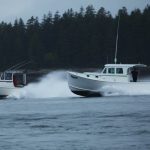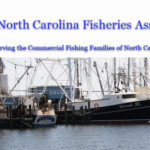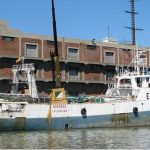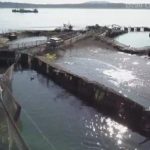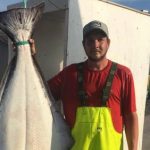Daily Archives: December 11, 2016

PANBO Blog: McMurdo SmartFind G8 AIS EPIRB, first of many, PLBs too?
Let’s first note that McMurdo’s trailblazing SmartFind G8 AIS EPIRB still awaits FCC approval and probably won’t be for sale in the U.S. until spring (along with its more conventional E8 and G8 siblings). But McMurdo has definitely developed this useful combination of local and global rescue beacon, other manufacturers may have AIS EPIRBs in the works, and I’ve got some details about how they’ll work. I also have some safety tips from an acquaintance who just dramatically experienced the effectiveness of a current ACR EPIR,,, The AIS component of coming AIS EPIRBs like the McMurdo SmartFind G8 is similar to what has already been developed for AIS SARTs and personal MOB beacons. Story by Ben Ellison on Read the rest here 15:21
Mid-Atlantic Fishery Management Council meeting in Baltimore, Maryland: December 12-15, 2016
 The public is invited to attend the Mid-Atlantic Fishery Management Council’s December 2016 meeting to be held December 12-15, 2016 in Baltimore, Maryland. The meeting will be held at the Royal Sonesta Harbor Court, 550 Light St., Baltimore, MD 21202, Telephone 410-234-0550. Webinar: For online access to the meeting, enter as a guest click here . Meeting Materials: Briefing documents click here as they become available. Agenda click here 13:04
The public is invited to attend the Mid-Atlantic Fishery Management Council’s December 2016 meeting to be held December 12-15, 2016 in Baltimore, Maryland. The meeting will be held at the Royal Sonesta Harbor Court, 550 Light St., Baltimore, MD 21202, Telephone 410-234-0550. Webinar: For online access to the meeting, enter as a guest click here . Meeting Materials: Briefing documents click here as they become available. Agenda click here 13:04
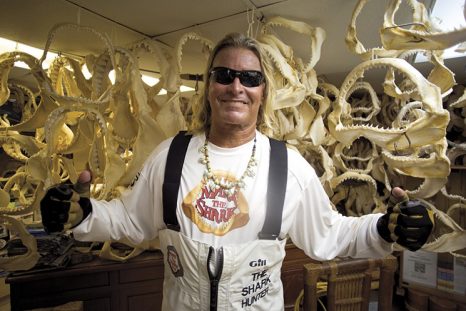
Charter fisherman catches kilo of cocaine off Miami coast
Miami fisherman Mark Quartiano takes pride in his ability to catch sharks, but on Wednesday he reeled in something else entirely: cocaine. He thinks the package had been in the water for a few weeks, as it had barnacles on it. Further inspection revealed (click for video) it to be a kilo of cocaine. “Lo and behold, it was one of those square grouper”, Quartiano joked to WPLG-TV. (click for uncensored reaction video) Quartiano is described by Miami New Times as a “love-him-or-hate-him shark fisherman” who “delights in rankling conservationists”. Read the rest here 11:26
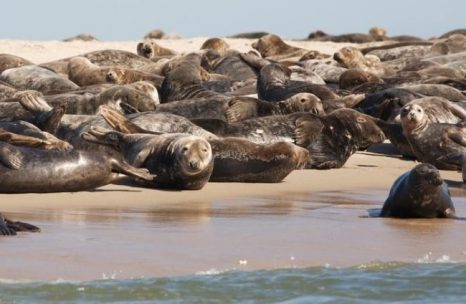
Cape Cod: Summing up the seals
When David Pierce seated himself at the table at the Nantucket Seal Symposium last month, one image came to mind: private pilot Aaron Knight’s video from last April showing miles of gray seals – a dozen deep, cheek by jowl, banding the Monomoy shoreline. Recently appointed as director of the state Division of Marine Fisheries, Pierce is a veteran of decades of fisheries negotiations as former director Paul Diodati’s proxy on the New England Fishery Management Council. Fishery managers live and die by population estimates, known as stock assessments, that help set sustainable catch levels for commercial fishermen, so it was disconcerting to hear that the same level of science had not been applied to the predators who eat them. “The determination of population size is extremely important, especially in the context of ecosystem management in New England,” Pierce said. “If they (gray seals) are out there in large numbers foraging, what might their impact be on the Georges Bank ecosystem?” The answer will not be coming any time soon, according to federal fisheries officials at the symposium. Read the story here 09:43
Sportsmen, commercials feud over Columbia River reforms
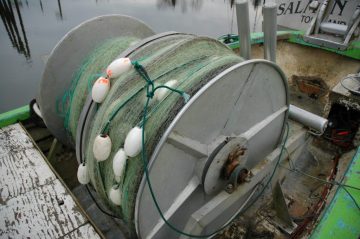 Sport fishermen from Southwest Washington repeatedly exhorted the state Fish and Wildlife Commission on Saturday to implement fully in 2017 the most sweeping reforms in Columbia River salmon management in decades. And their commercial foes, also from Southwest Washington, were equally strident that the plan adopted four years ago to eliminate gillnetting from the main river and to prioritize angling has been fraught with problems in the 2013-16 transition period. The nine-member citizen panel will meet Jan. 13 and 14 in Vancouver to make its decision. The Oregon Fish and Wildlife Commission is going through similar deliberations, then the two states will need to reconcile any differences in their policies. Reforms adopted by both states in early 2013 allocated more chinook salmon to sportsmen in the main Columbia and restricted gillnetting to off-channel sites like Youngs Bay near Astoria. The reforms also called for commercial fishing that remained in the main Columbia to be done with live-capture methods — such as purse seines and beach seines — designed to harvest hatchery stocks and release wild fish. Read the rest here 08:20
Sport fishermen from Southwest Washington repeatedly exhorted the state Fish and Wildlife Commission on Saturday to implement fully in 2017 the most sweeping reforms in Columbia River salmon management in decades. And their commercial foes, also from Southwest Washington, were equally strident that the plan adopted four years ago to eliminate gillnetting from the main river and to prioritize angling has been fraught with problems in the 2013-16 transition period. The nine-member citizen panel will meet Jan. 13 and 14 in Vancouver to make its decision. The Oregon Fish and Wildlife Commission is going through similar deliberations, then the two states will need to reconcile any differences in their policies. Reforms adopted by both states in early 2013 allocated more chinook salmon to sportsmen in the main Columbia and restricted gillnetting to off-channel sites like Youngs Bay near Astoria. The reforms also called for commercial fishing that remained in the main Columbia to be done with live-capture methods — such as purse seines and beach seines — designed to harvest hatchery stocks and release wild fish. Read the rest here 08:20






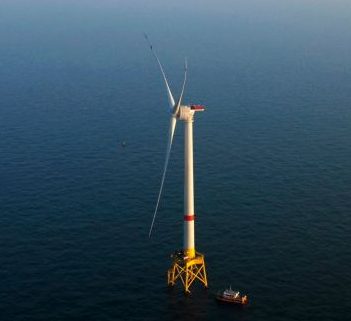 The lease rights to develop a wind-energy farm on 79,350 acres of ocean 11.5 miles from Jones Beach could be granted by federal regulators this week. But the online bidding is only the start of a process that could take seven years or more, officials said. The federal Bureau of Ocean Energy Management, a division of the Department of the Interior created by President Obama in 2010 to facilitate energy independence and accelerate wind-energy efforts, has said it will start the Thursday auction with an opening bid of $158,700, or around $2 per acre. The long-awaited path to that auction had seemed clear until fishing groups, including the largest commercial fishing association on Long Island, filed suit on Thursday seeking to block it, alleging the project of 194 turbines would hinder access to vital fishing grounds. A hearing on a request for a temporary restraining order and injunction has been scheduled for Dec. 14, a day before the auction, before U.S. District Court Judge Tanya S. Chutkan. But attorneys for both sides appear to have worked out an agreement that would let the auction go forward but give fishing groups 14 days’ notice before any final lease is executed. It awaits a judge’s approval.
The lease rights to develop a wind-energy farm on 79,350 acres of ocean 11.5 miles from Jones Beach could be granted by federal regulators this week. But the online bidding is only the start of a process that could take seven years or more, officials said. The federal Bureau of Ocean Energy Management, a division of the Department of the Interior created by President Obama in 2010 to facilitate energy independence and accelerate wind-energy efforts, has said it will start the Thursday auction with an opening bid of $158,700, or around $2 per acre. The long-awaited path to that auction had seemed clear until fishing groups, including the largest commercial fishing association on Long Island, filed suit on Thursday seeking to block it, alleging the project of 194 turbines would hinder access to vital fishing grounds. A hearing on a request for a temporary restraining order and injunction has been scheduled for Dec. 14, a day before the auction, before U.S. District Court Judge Tanya S. Chutkan. But attorneys for both sides appear to have worked out an agreement that would let the auction go forward but give fishing groups 14 days’ notice before any final lease is executed. It awaits a judge’s approval. 

























